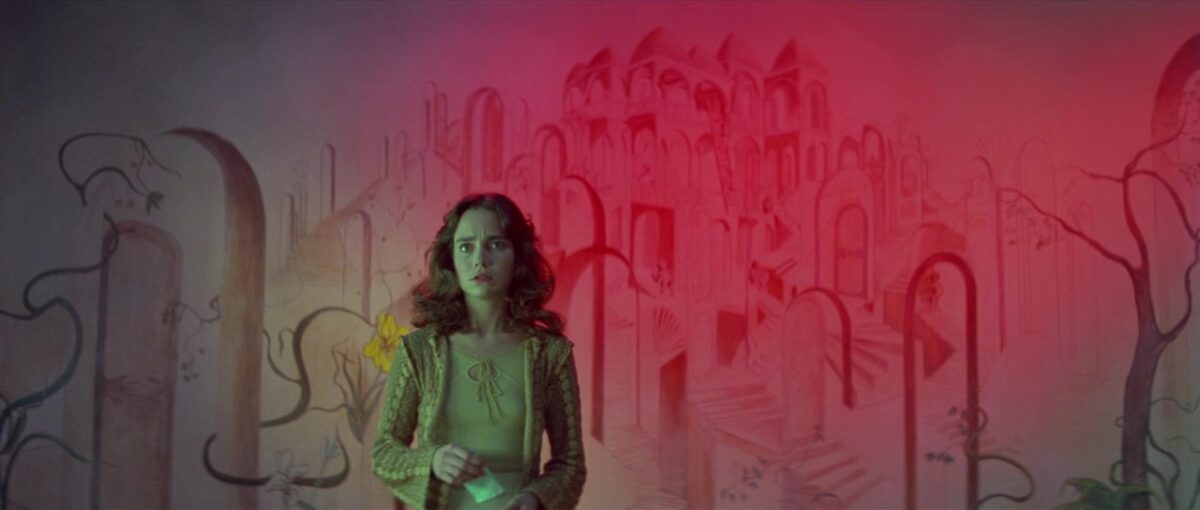Welcome to our Colossus Movie Guide for Suspiria. This guide contains our detailed library of content covering key aspects of the movie’s plot, ending, meaning, and more. We encourage your comments to help us create the best possible guide. Thank you!
What is Suspiria about?
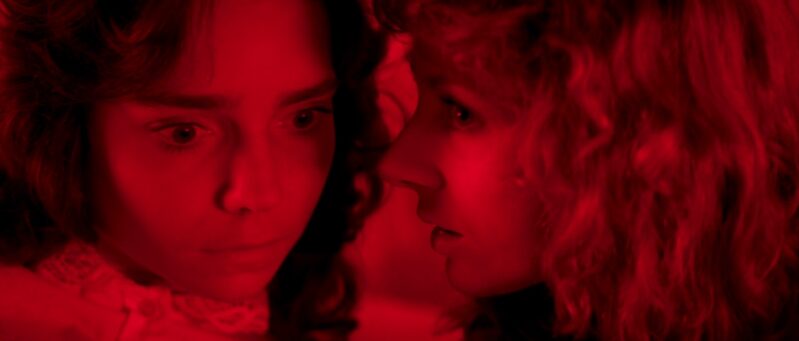
Suspiria is all about embracing and experiencing the impossible, the unknown. We go into the movie believing that witches aren’t real. However, we are immediately required to not only acknowledge their existence, but to assume their position and perspective as Suzy and her classmates navigate the evil waters of a witch coven. Suzy is the faceless character—someone whom we learn very little about—who serves as a stand-in for ourselves, the viewer. Think of the Tanz Akademie as a haunted house we are thrust into and forced to reckon with. The movie doesn’t hide details about the ballet school’s history with witches, and in fact dedicates a long-winded scene to detailing everything. We are told everything and forced to react accordingly. Suspiria is less focused on narrative and more focused the sensual experience of fear in the face of the unknown. The film is a technical achievement that embraces the supernatural and brings it to life—every filmic decision is in service of creating such a horrific experience.
Through that lens, many themes and ideas are born. First and foremost, the film is a fascinating exploration of the occult and the malice of witches, which own a very rich history many people believe in. Suspiria also suggests that evil exists in the shadows, in the crevices of our world, and isn’t always as obvious as we’d like it to be—making it all the more terrifying. In the plainest sense, Suspiria is a simple coming-of-age tale that follows all the familiar beats, as Suzy is a young dancer who is scared of entering a strange situation in a foreign country. Here at Tanz Akademie, she is forced to rely upon herself to escape the hellish happenings.
Anybody who first watched Luca Guadagnino’s Suspiria remake might think that Argento’s Suspiria doesn’t have the same narrative depth. But as you’ll see in this piece, we argue that Suspiria‘s ideology and humanistic explorations prosper thanks to its legendary technical qualities. The use of technicolor, setting, and cinematography—oh, and let us not forget the progressive rock band Goblin’s unsettling score—allow Suzy’s story to become broadly applicable in the most terrifying sense.
Movie Guide table of contents
Cast
- Jessica Harper – Suzy Bannion
- Stefania Casini – Sara Simms
- Flavio Bucci – Daniel
- Miguel Bosé – Mark
- Alida Valli – Miss Tanner
- Joan Bennett – Madame Blanc
- Udo Kier – Dr. Frank Mandel
- Barbara Magnolfi – Olga Ivanova
- Eva Axén – Patricia “Pat” Hingle
- Rudolf Schündler – Professor Milius
- Susanna Javicoli – Sonia
- Franca Scagnetti – Cook
- Giuseppe Transocchi – Pavlos
- Daria Nicolodi – Writer
- Dario Argento – Writer and director
The ending of Suspiria explained

A recap of Suspiria’s ending
Suzy learns about witches from her friend and former psychiatrist, Frank, as well as Professor Milius, a professor of the occult. Specifically, these two men speak of Greek émigrée Helena Markos, aka the Black Queen, who established the prestigious Tanz Akademie dance school back in 1895. Helena had been expelled from several European countries. She wrote a number of books on witchcraft, and when she first founded the school, she taught both dance and occult sciences. But it didn’t last long because after ten years of being cursed at by people in town, Helena died in a fire. The school was then taken over by her favorite pupil and hte study of occult was abandoned (or so we thought).
Frank is very skeptical of witchcraft. “As a believer in the material world,” says Frank, “and being a psychiatrist, I’m convinced that the current belief in magic and the occult, is part of mental illness. Bad luck isn’t brought by broken mirrors, but by broken minds.”
Professor Milius, however, is much more open to the powers of the occult. “They’re malefic, negative and destructive,” Milius says of witches. “Their knowledge of the art of the occult gives them tremendous powers. They can change the course of events and people’s lives, through harm…Their goal is to accumulate great personal wealth. It can only be achieved by injury to others. They can cause suffering, sickness, and even the death of those who for whatever reason offended them.”
At one point, Suzy asks if a “guild” of witches could still exist in the wake of Helena Markos. To which Milius responds: “The correct word is a ‘coven’ of witches. A woman becomes queen if her magic is a hundred times more powerful than the rest of the coven. It’s like a serpent. Its strength rests with its leader, with its head. A convent deprived of its leader is like a headless cobra…harmless. Skepticism is the natural reaction of people nowadays. But magic is ever-present. ‘Quoddam ubiquae, quoddam semper quoddam ab omnibus creditum est.’ It means, ‘Magic is everywhere, and all over the world.'”
When Suzy returns to the school, she finds herself alone as everybody has left to attend the Bolshoi Ballet. Confused, Suzy returns to her room, only to be attacked by a bat. After killing the bat, she recalls her conversation with Sara about hearing footsteps. Suzy tracks the footsteps carefully in her head and realizes they lead to Madame Blanc’s office.
Suzy sneaks her way up to the office, and then suddenly remembers what Pat said the night she arrived at the school: “The secret! I saw beyond the door. Three irises! Turn the blue one!” So Suzy turns a blue iris flower painted on the wall and makes her way through a secret hallway. The path leads her to a room where the school’s employees are gathered around Madame Blanc, who is plotting Suzy’s death because she’s been asking so many questions. “Helena, give me power!” she cries.
After being spotted, Suzy sneaks away, only to find Sara’s disfigured corpse resting in a room. She escapes into another room that happens to be Helena Markos’s bedroom. Suzy recognizes the breathing behind a curtain, and after knocking over a decorative peacock with a crystal plumage, the silhouette of Helena rises from her bed. She begins to taunt Suzy by saying things like “Death is coming for you.”
Helena then says, “Hell is behind that door!” and through the door comes Sara’s reanimated corpse trying to kill Suzy with a knife. Suzy grabs one of the peacock’s broken glass quills and stabs the shadow where Helena’s body rested in her bed. Helena’s body reappears as she writhes in pain and begins to die. Suzy runs out of the room to find the rest of the coven dying in agony as the result of Helena’s death. Suzy flees the school as it implodes and bursts into flame. Smiling, she walks away in the rain.
The meaning of Suspiria‘s ending
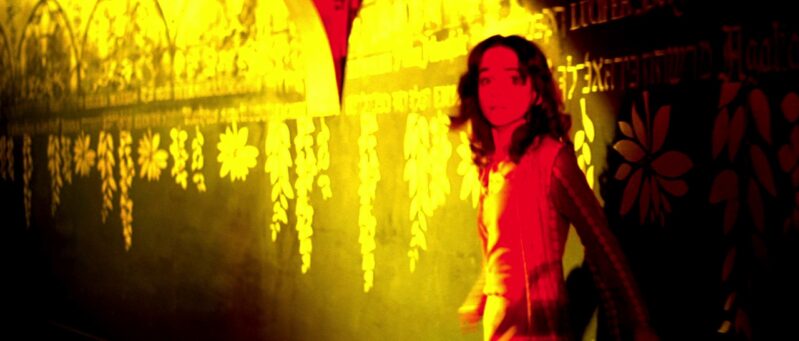
I love Suspiria because its exploration of its main character, Suzy, is so atypical of what we’re used to from movies. In truth, we don’t learn much about Suzy. Our introduction to her is during a rainstorm when she feels lost and scared and bewildered by the daunting situation at hand: being alone in a foreign country. All we know is that she traveled from New York to attend a prestigious dance school—and that’s about it. This American ballet student doesn’t form deep, meaningful connections with anyone at the school, doesn’t reveal anything about her past. She is a bit of a faceless body.
Making her the perfect companion for us, the viewer, and making her the perfect vehicle for the film’s exploration of the supernatural, the impossible. We head into the film believing witches aren’t real, but before long—in fact, in the film’s opening moments—we are required to accept that, in this dreamlike world that mirrors our own, they’re real as hell. Suspiria desires to thrust us into the unknown, to guide us through the Tanz dance academy as if it’s a haunted house. We learn information as Suzy does. We slowly piece together the history of the school, the fact that witches actually exist and mean very real harm.
This is the movie’s power: complete and utter immersion. Not every film does this—in fact, movies films rarely do this, especially in modern times. Ideas are often pushed before images and colors and setting. But in Suspiria, the visuals take precedence, are of utmost important in truly understanding the ending. And this is done in a much more meta way that you may realized. And that meta exploration is what helps us become connected to Suzy, is what ultimately helps us not only understand but appreciate the ending. Let me explain.
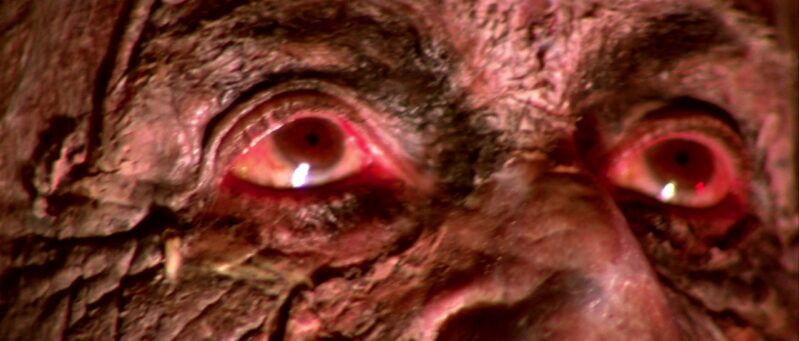
Suspiria is more concerned with the senses than the intellect. The cognitive part of our brain is desperate to solve puzzles and make sense—but every practically mystery and question and oddity is explained to us in the final thirty minutes of the film. As you read from the description above, we are literally told about Helena Markos just minutes before Suzy runs into her ghastly body. In terms of plot, nothing is kept in the dark. Which leaves us with nothing but the astounding images that overwhelm the screen in those final moments.
For a minute, let’s forget the frontal lobe of the brain that’s in charge of the high cognitive skills, like thinking and planning and organizing. And let’s concentrate on the parental lobe that is involved with sensory processes, attention, language. It’s less important to know what’s happening in Suspiria and more important to feel what’s happening. And as a result, a higher cognition is achieved—a sort of understanding that is born from giving ourselves over to Argento’s dreamlike vision. When we completely immerse ourselves in Suspiria—when we sit in a dark room and remove all exterior distractions and crank the volume way up—we can sense and, ultimately, understand the power of the movie’s ending.
For instance, take the use of color in Suspiria (which is discussed further in our themes and meaning section). Our cognitive brains like to assign certain colors to specific emotions or specific character traits. Blue is calming, red is sinister, green represents greed, etc. But that never seems to be the case in Suspiria, a film where a random primary or secondary color is used during moments of extreme fear, of the vastly strange and unfamiliar. Colors aren’t used specifically in the categorical sense, but sensually in the collective sense; all colors are heightened in order to achieve a disorienting effect, causing us to feel fear in moments we might feel safe, causing us to feel powerless in moments where we think we have everything figured out. Despite understanding the complete history of Helena Markos and her school, and despite hearing Madame Blanc’s plot to kill Suzy, we are nonetheless overpowered by witchcraft, by the highly saturated colors that wash over the screen, that wash over Suzy as she tries to escape literal Hell.
When we give ourselves over to the power of the film’s visuals, we can become in step with characters like Suzy, or even characters like Sara and Pat. While we typically require information in order to confide with these characters, Suspiria asks us to soak ourselves in the sensual experience to become part of their battle. And Suzy’s battle is that she’s grappling with the unknown. She didn’t believe in witches before traveling to Germany…but is certainly starting to entertain the thought given all the strange occurrences at the prestigious dance academy.
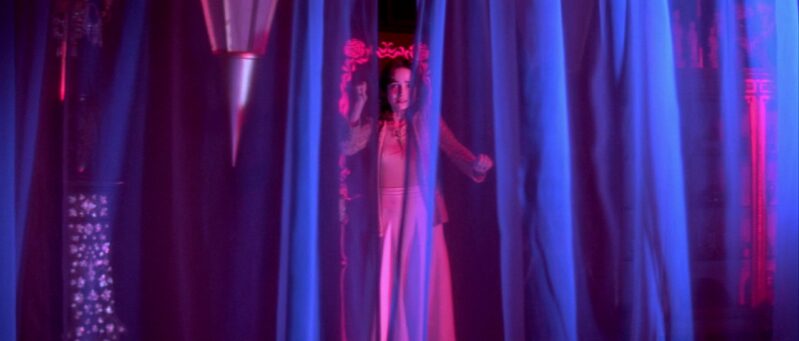
The two doctors then represent the two parts of the brain we discussed earlier. Frank sees no reason to believe in witches. There is a logical, psychological reason behind every human action; he believes that “bad luck isn’t brought by broken mirrors, but by broken minds.” But Professor Milius embraces the hellish, the impossible, the occult. “Magic is everywhere, and all over the world.” Those two worldviews directly clash, creating immense cognitive dissonance in Suzy, in the viewer. We believe witchcraft isn’t real, yet the movie makes it abundantly clear through its cinematography, through it setting, through its color palette that witchcraft is not only real, but that it’s coming for us and means to destroy us.
Dario Argento didn’t necessarily believe in witches, as he discussed in this interview with Vulture. But he is nonetheless fascinated with the wealth of writing surrounding witches that has existed for centuries, by the belief in witches. For a supernatural phenomenon such as witches that, in our conscious world, definitely doesn’t exist…witchcraft certainly has a rich history, has plenty of experts, has plenty of people who believe it to be a very real thing. Suspiria then becomes an artistic exploration of that cognitive dissonance. We don’t believe in stories about witches, but we are nonetheless shaken by their details, by the teeniest, tiniest possibility that we could someday become entangled in a witch’s dark web.
This is the point of haunted houses, right? Heading into the haunted house, we know that it’s all fake. But we are, nonetheless, scared as hell by what’s happening. Argento took that idea and heightened it. He thrusts us into a dreamlike version of our comforting world and allows the supernatural to gain shape. The point of the movie isn’t to force us to consider the possibility of witchcraft, but to embrace the unknown; to put our cognitive thinking to the side and embrace a world where the impossible exist; to find out what it feels like to be trapped in a house filled with witches and fight our way out.
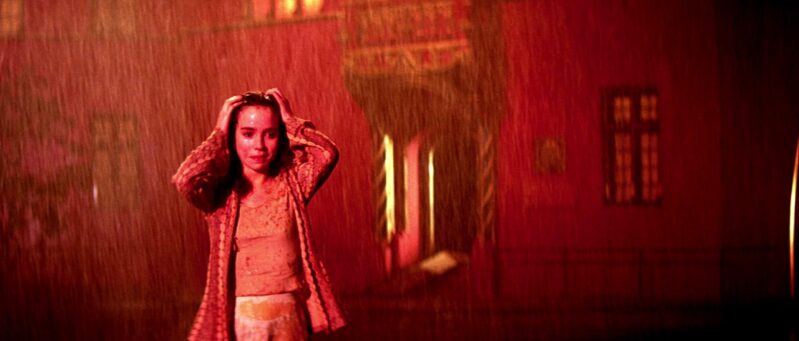
When Suzy enters the picture, she feels lost in the rain. But by the end, the rain cleanses her, frees her from the ravenous coven that inflicts pain and misery, rebirths her as she leaves behind this temporary terror of life and heads into the unknowable subsequent phase. Honestly, that’s a familiar feeling for anybody. In that sense, the ending of Suspiria is so easy to understand that you don’t even have to think about it—you just have to experience it.
The themes and meaning of Suspiria
The meaning of color in Suspiria
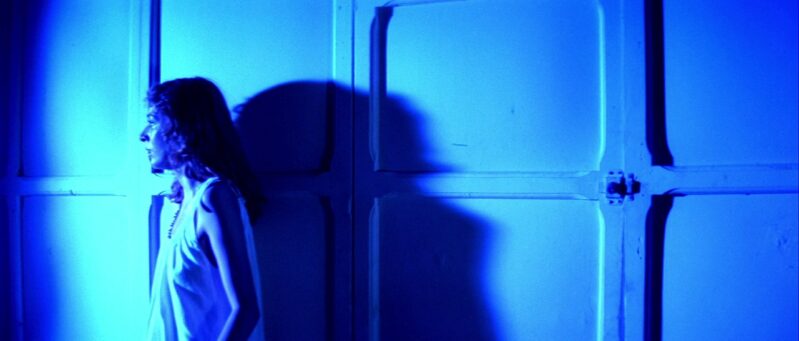
Many horror films have been influential for various reasons. Psycho proved that you didn’t need gimmicky monsters, that humans can be as deranged as the undead. When a movie doesn’t show its killer until the final act, that building sense of paranoia is a nod to Jaws. And Suspiria proved to the world that overwhelming color could be used as a source of tension—even the colors we often find comforting.
You’ll notice a lot of color throughout Suspiria, and not just the color red. The beauty of Argento and cinematographer Luciano Tovoli’s collaboration is they understood that the colors that typically make us feel safe are the best tools for exacerbating our deepest, darkest fears. Take this quote from an interview with Tovoli for “American Cinematographer”:
A [horror] film brings to the surface some of the ancestral fears that we hide deep inside us, and Suspiria would not have had the same cathartic function if I had utilized the fullness and consolatory sweetness of the full colour spectrum. To immediately make Suspiria a total abstraction from what we call “everyday reality,” I used the usually reassuring primary colours only in their purest essence, making them immediately, surprisingly violent, and provocative. This brings the audience into the world of Suspiria. In Suspiria, the combination of light and colour takes an audience out of reality and to a place of genuine horror.

As Rebekah Bustos points out in her essay entitled “Horror, Colour and Design in Dario Argento’s ‘Suspiria’,” children’s growth is typically stimulated by bright, vibrant colors. This becomes important for the coming-of-age story of Suspiria, which forces the viewer into ghastly world where the sinister unknown lurks in every crevice. Scenes constantly pull you into a false state of comfort, only for often pleasing colors to be accentuated to appalling volumes. Bustos elaborates on the psychology of this strategy:
The use of familiarity has an uncanny valley type effect, a feeling of uncertainty that has been passed down to us genetically. These ideals come from philosopher Carl Jung under the method of “Genetic Memory” in the part of your psyche known as the collective unconscious. While we are not aware of the collective unconscious, it can dictate how we act and feel. It makes sense why this theory was used in conjunction with saturated colours because it taps into the primal subconcious of viewers.
When it comes to color, our memory contains automatic and unconscious associations, meaning there are some colors we always experience the same way. But what happens when those colors are heightened and super saturated? Argento and Tovoli’s theory was that our connection to the characters and what they were experiencing would then be heightened as well. And in Suspiria, the characters experience incredible fear. Fear of the unknown, of the otherworldly, of the impossibly sinister. We start by feeling safe with these colors—before Argento rips the rug from underneath us. Then we feel overwhelmed by the color, prey to its intensity. This is an important effect in Suspiria, a movie that requires us to become lost in its evil labyrinth.
Fear of the unknown
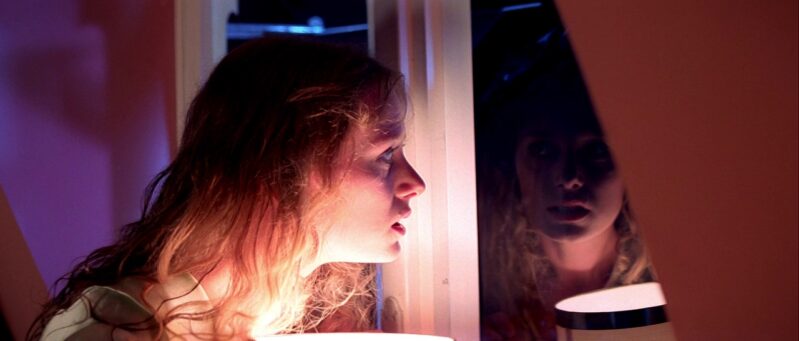
An important part of Suspiria, as discussed in the ending explanation, is the fear of the unknown—or, perhaps, the embracement of the unknown. Many movies make their metaphors for life clear. Take, for example, a film like Everything Everywhere All at Once. All of the alternate universes are really just metaphors for all the different paths Evelyn could have taken in her life. The catharsis of the film is when she realizes that she can find the same kind of happiness she imagines for herself in another life in the very life she’s currently living. Or take a film like Mother!, which uses direct stories and characters from the Bible to comment on our relationship with mother Earth and how people treat one another under the eyes of God.
On the flip side, something like Suspiria feels detached from allegory and entirely committed to its story. Which, in effect, allows the film to feel broadly applicable. In the case of Suspiria, I see a familiar story: the internal battle that occurs when we encounter something new and scary in life. This sort of allegory is common to coming-of-age stories, but is never outright stated or even hinted at—we barely learn anything about Suzy and whether or not she feels overwhelmed by the new city. But we can certainly sense this about her, given the supernatural situation at hand. The presence of witches heightens a common storyline amongst coming-of-age films to spectacular levels.
And Argento keeps in step through his use of color, of setting, of cinematography. Every technical and narrative decision is aimed at elevating the camera to omniscient levels, to put us in the perspective of the witches watching Suzy as she navigates the school. The presence and danger of witches isn’t hidden from us, but becomes part of the mise-en-scène, which only further heightens the terror at hand. Suzy’s journey then becomes to overpower the unknown, to come out the other side a stronger human being.
Why is the movie called Suspiria?

The title derives from to Thomas De Quincey’s 1845 collection of essays entitled “Suspiria de Profundis,” which in short is simply referred to as “Suspiria.” It is a Latin phrase that means “sighs from the depths.” De Quincey’s writing, which is largely rooted and influenced by the author’s opium addiction, examines the how memory is influenced by hallucinogenic drug use.
There is a section in De Quincey’s essays called “Levana and Our Ladies of Sorrow.” This piece states there are three Sorrows in life, for which of each he gives a name: Mater Lacrymarum, Mater Tenebrarum, and Mater Suspiriorum. “Mater” means mother, which is why the concept became the title of Argento’s “Three Mothers” trilogy, which involves the films Suspiria, Inferno, and Mother of Tears. The other three words stand for “tears,” “darkness,” and “sighs.”
These three mothers rule the world with blood, pain, and suffering. While De Quincey spoke of these vile, vindictive figures, De Quincey didn’t explain what their malefic power consisted of—which provided an opening for Argento, who was fascinated by the history of witchcraft and the belief in it (he himself was not a believer). Thus, the “Three Mothers” creates a story for these three murderous witches living in three different cities: Freiburg, New York, and Rome. Their powerful magic aims to manipulate human lives on both an individual and global scale. “Mater Suspiriorum,” the first witch portrayed in Argento’s trilogy, is the witch who founded Tanz Akademie, Helena Markos (her story is resumed later in the trilogy during a sequence in Mother of Tears).
Which brings us back to the title Suspiria. In Latin, the word literally means “sighs,” which De Quincey describes as one of life’s three great Sorrows. Alongside “darkness” and “tears,” there’s something unsettling about a movie simply being called “sighs.” You sigh during a moment of sadness, or a moment of relief, or a moment of tiredness—all of which communicate a familiar feeling. You are either on the other side of something terrible or are anticipating something terrible. And it’s not just one sigh—it’s multiple “sighs.” Which communicates a general uneasiness amongst a crowd, or signals that someone’s life is filled with sighs that bring them great sorrow.
Combine this reading of the word “suspiria” with the history of Helena Markos and her place amongst the “Ladies of Sorrow” and you have a title that signals anxiety, apprehension, restlessness. It’s the perfect fit for a movie that’s all about the impossible becoming very possible and tormenting your psyche.
Important motifs in Suspiria
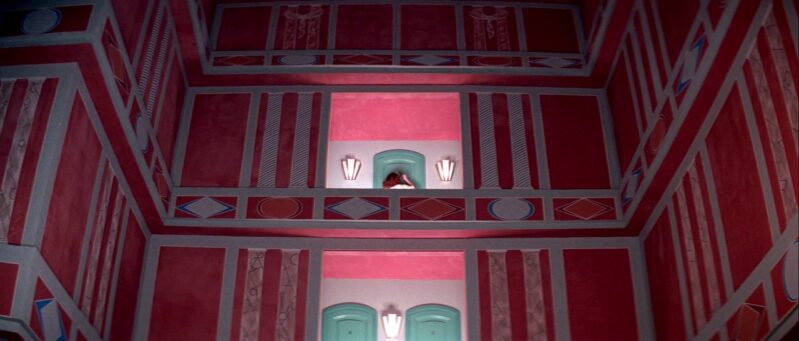
Eyes
There is a pair of eyes that appears at various points throughout Suspiria. We see the eyes when both Pat and Sara are killed, and once again at the end when Suzy nears Madame Blanc’s office. This contributes to the idea of entering a haunted house, that you’re never alone, that you’re always being watched by maleficent forces. We, the viewers, are often relegated to this position, forced to observe our characters from a malicious perspective. This keeps in line with the film’s general strategy with the cinematography, which aims to announce the presence of witchcraft and an all-knowing ghastly force. This is done through the cinematography, which often hovers above as people think they’re alone; through the setting, which becomes a tool of destruction for the witches; and though the score, which chants and laughs and taunts as mere mortals try to survive. The eyes simply serve as a physical reminder of that observation.
Rain
We see rain twice in Suspiria: once at the beginning, and once at the end. In the beginning, the torrential downpour is off-putting and disorienting, causing an already flustered and scared Suzy to feel even more lost and lone in a foreign country. The movie only continues to heighten that anxiety, as Suzy is thrust into an evil world where she must not only acknowledge the existence of witches, but battle them. This entire ordeal is reminiscent of a familiar story to which we can all relate: the fear of navigating something new and scary. Which makes the rain at the end of the movie cathartic and beautiful. Think of the rain at the beginning as fear of the unknown, and the rain at the beginning as rebirth.
Questions & answers about Suspiria

Why does Mark take a liking to Suzy?
As noted in the film, Mark shared a flirtation with Pat, and then immediately takes a liking to Suzy after Pat is murdered. We can assume that Mark’s intentions were evil if we believe him to be a witch—which I do. We know Mark is lying when he says that Sara left Tanz Akademie around seven in a car, meaning he’s sided with Madame Blanc and the rest of the witches. He aims to keep Suzy in the dark. So we can assume that he starts a flirtation with Suzy to get closer to her, especially since she’s the roommate of a girl, Sara, who was roomed with Pat and is already suspicious of witches at the school.
What building was the Tanz Akademie based upon?
Outside the Tanz Akademie there rests a sign that lists a man’s name, “Desiderius Erasmus Von Rotterdamn,” along with the years “1469-1536” and the writing “Der beruhmte humanist und gelehrte seiner zeit, wohnte in den jahren 1529 bis 1531 in diesem hause zum walfisch.” This translates to “of the famous humanists and the elderly, who lived in the years 1529 to 1531 in their home in Wales.”
Argento created a nearly exact replica of the façade of a late Gothic bourgeois house called The Whale House, which was built by Jakob Villinger von Schönenberg. Villinger built another house in which the Dutch humanist Desiderius Erasmus Roterodamus—one of the most influential thinkers of the Northern Renaissance—inhabited after his escape from Basel.
How does this all tie back to Suspiria? Well, Argento chose to fashion the Tanz Akademie after The Whale House for a reason. And Erasmus of Rotterdam was a theologian and Catholic priest most known for writing The Praise of Folly in 1511, which was a satire of religious superstitions of the time. Which makes the use of The Whale House ironic. By no means does Argento argue for the existence of witches. But the movie’s thematic intent is to question the unknown and explore the impossible. So by using a house dedicated to a man who argued against the absurd belief in witches, Argento subtly pokes at intellectuals who dismiss the unknowable.
Now it’s your turn

Have more unanswered questions about Suspiria? Are there themes or motifs we missed? Is there more to explain about the ending? Please post your questions and thoughts in the comments section! We’ll do our best to address every one of them. If we like what you have to say, you could become part of our movie guide!

